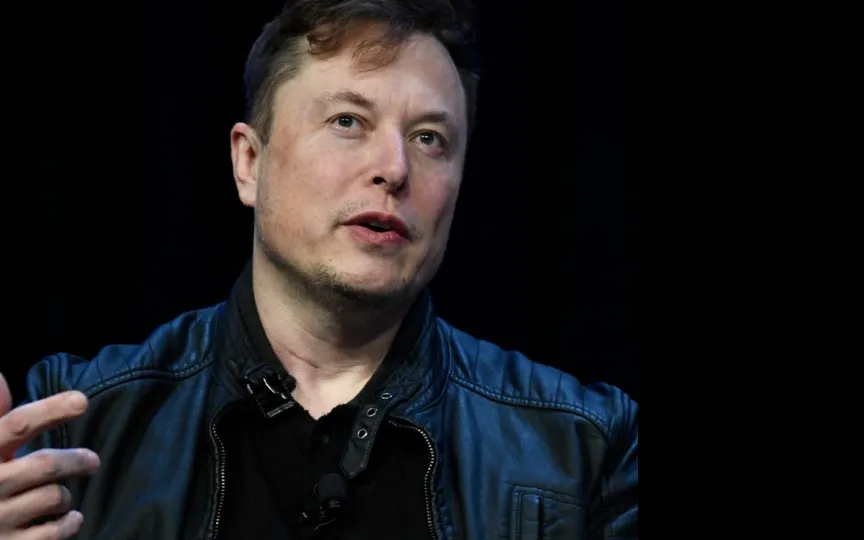SpaceX, owned by Musk, is constructing a network of spy satellites for a US intelligence agency.
WASHINGTON: SpaceX is building a network of hundreds of spy satellites under a classified contract with the US intelligence agency, five sources familiar with the program said, signaling deepening ties between billionaire entrepreneur Elon Musk’s space company and national security agencies.
The network will be built by SpaceX’s Starshield business unit in a 2021 $1.8 billion contract with the National Reconnaissance Office (NRO), the intelligence agency that manages spy satellites, sources said.
The plans show SpaceX’s involvement in U.S. intelligence and military projects and illustrate the Pentagon’s deeper investment in massive, low-Earth-orbiting satellite systems designed to support ground forces.
If successful, sources said the program would significantly advance the US government’s and military’s ability to rapidly detect potential targets almost anywhere in the world.
Sources say the deal shows growing confidence on the part of the intelligence firm, whose owner has clashed with the Biden administration and sparked controversy over the use of Starlink satellite links in the Ukraine war.
The Wall Street Journal reported in February the existence of a classified $1.8 billion Starshield contract with an unknown intelligence agency, but did not elaborate on the purpose of the program.
Reuters is revealing for the first time that the SpaceX deal is for a powerful new spy system with hundreds of satellites with earth-imaging capabilities that can operate as a swarm in low orbits, and that the spy agency Musk’s company is working with is the NRO.
Reuters was unable to determine when the new satellite network would come online and was unable to determine which other companies are involved in the program with their own contracts.
SpaceX, the world’s largest satellite operator, did not respond to multiple requests for comment on the deal, its role in it and the details of the satellite launches. The Pentagon requested comment from NRO and SpaceX.
In a statement, the NRO acknowledged its mission to develop the advanced satellite system and its partnerships with other government agencies, companies, research institutes and nations, but declined to comment on Reuters’ findings about SpaceX’s involvement in the effort.
“The National Reconnaissance Office is developing the most powerful, versatile and sustainable space-based intelligence, surveillance and reconnaissance system the world has ever seen,” the spokesman said.
The satellites can track targets on the ground and share the information with U.S. intelligence and military officials, the sources said. In principle, this would allow the US government to quickly capture continuous images of operations on the ground almost anywhere on Earth, aiding intelligence and military operations, they added.
About a dozen prototypes have launched since 2020, among other satellites on SpaceX’s Falcon 9 rockets, according to three sources.
A US government database of objects in orbit shows that several SpaceX missions have used satellites that have never been recognized by the company or the government. Two sources confirmed they were prototypes of the Starshield network.
All the sources asked to remain anonymous because they were not authorized to discuss the US government program.
The Pentagon is already a big SpaceX customer, using its Falcon 9 rockets to launch military payloads into space. Starshield’s first prototype satellite, launched into space in 2020, was part of a separate, roughly $200 million contract that helped position SpaceX for a subsequent $1.8 billion award, one of the sources said.
The planned Starshield network is separate from Starlink, SpaceX’s growing commercial broadband system that has about 5,500 satellites in space and provides near-global internet to consumers, businesses and government agencies.
The classified constellation of spy satellites represents one of the U.S. government’s most sought-after capabilities in space, as it is designed to provide the most persistent, widespread and rapid coverage of activities on Earth.
“No one can hide,” one of the sources said of the system’s potential capability, describing the network’s reach.
Musk, also the founder and CEO of Tesla and owner of social media company X, has pushed for innovation in space but has caused frustration among some Biden administration officials because of his previous control of Starlink in Ukraine, where Kiev’s military uses it for security purposes. communication in conflict with Russia. Musk’s, not the US military’s, control over Starlink in a war zone created tension between him and the US government.
Several Reuters stories have detailed how Musk’s manufacturing operations, including SpaceX, have harmed consumers and workers.
The Starshield network is part of an intensifying race between the United States and its rivals to become the dominant military power in space, in part by extending spy satellite systems away from larger, more expensive spacecraft in higher orbits. Instead, a large, low-orbit network can provide faster and almost continuous imaging of the Earth.
China also plans to start building its own satellite constellations, and the Pentagon has warned of future space weapons from Russia that may be capable of shutting down entire satellite networks.
Starshield aims to be more resistant to attacks by advanced space forces.
The network is also intended to greatly expand the US government’s remote sensing capabilities, and consists of large satellites carrying imaging sensors and a larger number of relay satellites that relay imaging data and other communications over the network using intersatellite lasers. , two of the sources said.
The NRO includes personnel from the US Space Force and the CIA and provides classified satellite imagery to the Pentagon and other intelligence agencies.
The spy satellites contain sensors supplied by another company, three of the sources said.




